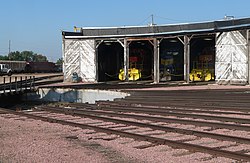2020 census
As of the 2020 census, there were 19,149 people, 7,369 households, and 4,623 families residing in the county. The population density was 15.2 inhabitants per square mile (5.9/km2). There were 8,396 housing units. The racial makeup of the county was 79.9% white, 11.8% Asian, 2.4% American Indian, 2% Pacific Islander, 1.7% black or African American and 2.0% two or more races. Those of Hispanic or Latino origin made up 14.8% of the population. [13]
2010 census
As of the 2010 census, there were 17,398 people, 7,276 households, and 4,509 families residing in the county. The population density was 13.8 inhabitants per square mile (5.3/km2). There were 8,304 housing units at an average density of 6.6 per square mile (2.5/km2). The racial makeup of the county was 89.7% white, 3.6% Asian, 1.1% American Indian, 0.8% black or African American, 0.1% Pacific islander, 3.0% from other races, and 1.6% from two or more races. Those of Hispanic or Latino origin made up 7.7% of the population. In terms of ancestry, 45.4% were German, 11.7% were Norwegian, 10.3% were Irish, 8.8% were English, and 4.1% were American.
Of the 7,276 households, 28.6% had children under the age of 18 living with them, 49.5% were married couples living together, 8.3% had a female householder with no husband present, 38.0% were non-families, and 33.0% of all households were made up of individuals. The average household size was 2.31 and the average family size was 2.92. The median age was 41.2 years.
The median income for a household in the county was $40,716 and the median income for a family was $56,288. Males had a median income of $37,020 versus $25,824 for females. The per capita income for the county was $23,409. About 6.3% of families and 13.1% of the population were below the poverty line, including 12.8% of those under age 18 and 12.5% of those age 65 or over.



